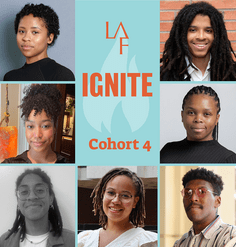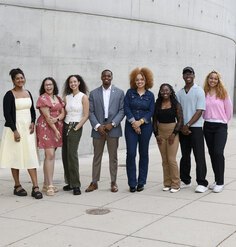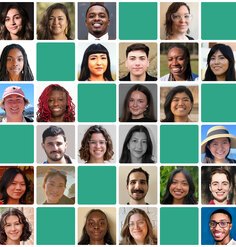Olmsted Scholar Feature: Invasive Infrastructure - Free and Radical
By David Godshall, 2010 National Olmsted Scholar Finalist
One of the starkest dichotomies on which the profession of landscape architecture is built is a distinction between healthy, ‘sustainable’ landscapes and derelict, unwanted spaces. Much of my research involves the idioms in which landscape architecture could creatively engage with these latter spaces. The dichotomy can be drawn along many lines, but perhaps nowhere is it more obvious than it is with respect to plants.
We live in a moment in which plants are meticulously categorized, scrutinized, studied, and ultimately, judged. Species that meet specific, value-based criteria (natives!) are celebrated in magazines, newly built landscapes, and plant nurseries. Meanwhile, species deemed to be invasive undergo a kind of tacit persecution. Their snapshots are posted on websites; their locations are mapped, tracked, and surveilled; conferences are even held in which we listen to lectures on how to eradicate the species entirely. One would think, on initial perusal through any pro-native/anti-invasive website or literature, that the argument is really as simple as regarding some plants as rightful citizens of landscape and others as "illegals."
Invasive species, in many instances, are truly harmful. They choke out native flora, overtake riparian corridors, and diminish the availability of habitat for native or naturalized fauna. In large parks and wilderness areas, which often serve as the last oasis for native plant communities, they are clearly the most damaging. Yet, something interesting happens when we shift the context from a wilderness area to a derelict urban space. Invasive plants are often the only species capable of effectively colonizing and flourishing in polluted urban areas. On vacant lots and street edges, they sprout from cracks and seams in the urban carpet and serve as free, non-planned tracts of urban wilderness. These fragmentary ecological landscapes provide lonely habitats for species that don’t understand their own biological reality in terms of nativism and its opposites.
The dilemma of invasive plants, and the semantic overlap between the way in which we talk about them and the way in which we talk about issues like immigration, gentrification, globalization, and the criminal system, has been guiding much of the research, writing, and art I’ve been focusing on lately. I’ve recently begun hiking into wilderness areas at night and photographing invasive plants in a manner reminiscent of the tabloid photography of Weegee—literally catching these plants in the moment of their crimes. By contrast, I have also begun documenting them in less lurid daytime moments, in an attempt to capture their ecological complexity and visual appeal. In addition, I’ve been working hard on the publication of the second issue of Landskrape Heartattachture, an inflammatory but engaging journal about ‘Landscape’ and all its ramifications. The second issue will be released soon. If you’d like to be involved or get a copy of the first journal, please email me at dmgodshall [at] gmail.com (dmgodshall[at]gmail[dot]com).
David Godshall graduated from UC Berkeley with a Masters in Landscape Architecture, and after a brief and wonderful sojourn to Hawaii, began working for Peter Walker and Partners in Berkeley, California. He is currently working on the design development phase of a waterfront park in Australia for PWP.










